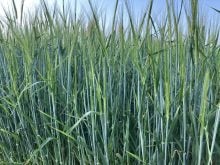Live cattle prices in the U.S. continue to set new weekly records in what is one of the most remarkable price starts ever to a new year. Prices the first week of the year, based on a five-area steer, averaged US$198.93 per cwt live. They averaged US$202.58 per cwt the following week, US$203.67 per cwt the next week and US$209.19 per cwt the week before last. In other words, they increased by US$14.38 per cwt in the first four weeks and were likely to be steady to firm again in the last week of January.
Several factors caused the price surge. Packers appeared to be light on their purchases despite two holiday-shortened production weeks and were forced to pay higher prices despite negative operating margins. Extremely cold weather was also a factor, as cattle feeders chose to hold cattle to add weight back until the weather improved.
Meanwhile, USDA’s annual cattle inventory report published on January 31 showed that the U.S. total cattle inventory fell slightly in 2024 from 2023 and remains the smallest total since 1951. USDA reported a January 1 total of 86.662 million head, which was down 0.6 per cent from the 2023 total of 87.175 million head. The big difference between 1951 and this year is that beef production then totalled 8.1 billion pounds. Beef production this year is estimated to be 25.9 billion pounds. Give credit to the best beef producers in the world, says Andrew Gottschalk, HedgersEdge.com.
The report showed that the number of beef cows on January 1 was 27.9 million head, down one per cent on 2023. The number of beef cow replacements (heifers held back for herd rebuilding) was 4.67 million head, down one per cent. This meant that herd rebuilding did not begin in 2024 and that the beef industry experienced its fifth year of herd liquidation.
Read Also

The Canadian Cattle Association’s international advocacy efforts
Global ag policies affect Canadian food policy, so the Canadian Cattle Association participates in international and domestic forums
USDA estimated the 2024 calf crop at 33.5 million head, down slightly from the previous year’s calf crop. Calves born during the first half of 2024 were estimated at 24.6 million head, down slightly from the first half of 2023. Calves born during the second half of 2024 were estimated at 8.93 million head, 27 per cent of the total 2024 calf crop.
Cattle and calves on feed for the slaughter market in the U.S. for all feedlots totalled 14.3 million head on January 1, 2025. The inventory is down one percent from the January 1, 2024 total of 14.4 million head. Cattle on feed in feedlots with capacity of 1,000 or more head accounted for 82.7 per cent of the total cattle on feed on January 1, 2025, up slightly from the previous year. The combined total of calves under 500 pounds and other heifers and steers over 500 pounds outside of feedlots at 24.6 million head, was slightly below January 1, 2024.
Steer and heifer slaughter in 2024 was the only slaughter category to show a year-on-year increase, said the USDA in another report. Beef cow slaughter had the largest year-on-year decline, followed by dairy cows and bulls. Examining heifer, beef cow and dairy cow slaughter as a percentage of total slaughter offers an indication of producer intentions for maintaining or growing their herds in the coming year, says USDA’s Economic Research Service.
As a proportion of total slaughter, heifer and cow slaughter declined by almost two percentage points from 2023, says Economic Research Service. However, it remained the third-highest share over the last 25 years. A year ago, hay prices for 2024 were expected to decline as forage supplies grew. As a result, calf prices were expected to rise to improve producers’ operating margins, says Economic Research Service.
















